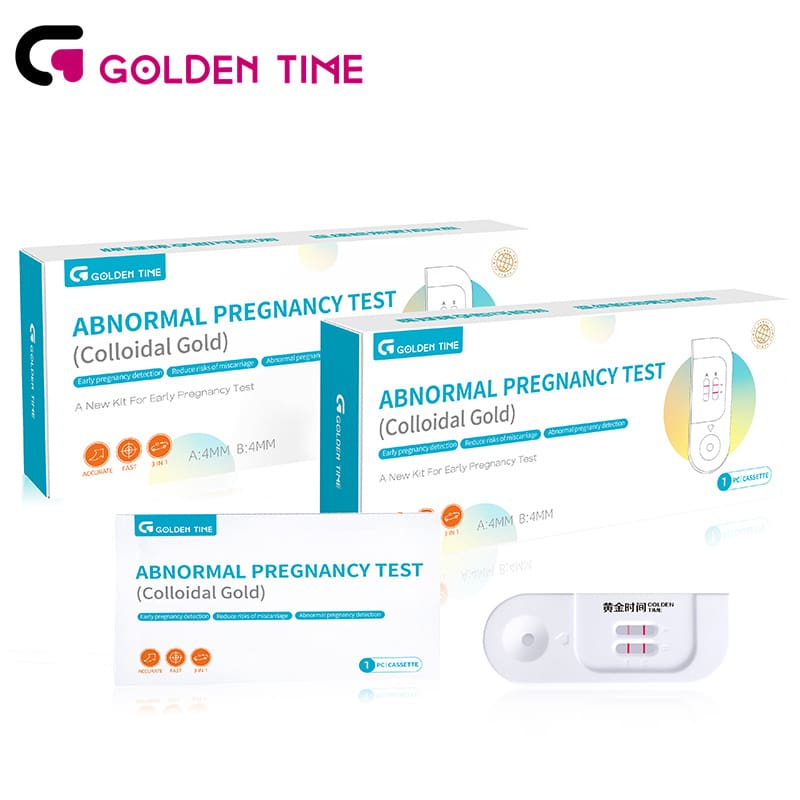12 月 . 04, 2024 18:04 Back to list
early pregnancy test kit
Understanding Early Pregnancy Test Kits A Comprehensive Guide
In recent years, early pregnancy test kits have become an essential item for many individuals and couples trying to conceive or avoid pregnancy. These kits offer a convenient and private way to detect pregnancy at home, providing results that can shape personal and family planning decisions. But how do these tests work, when should they be used, and what factors should you consider when using one? This article aims to demystify early pregnancy test kits and guide you through their use.
What is an Early Pregnancy Test Kit?
An early pregnancy test kit is a diagnostic tool designed to detect the presence of the hormone human chorionic gonadotropin (hCG) in urine. This hormone is produced shortly after a fertilized egg implants itself into the uterine lining, typically around six days post-conception. While traditional pregnancy tests can be used after a missed period, early detection kits allow users to test as soon as a week before their expected period, making them a preferred choice for those eager to confirm pregnancy.
How Do Early Pregnancy Tests Work?
Early pregnancy test kits are available in various forms but generally involve the following steps
1. Collecting a Sample Users typically urinate directly onto the test stick or dip a test strip into a collected urine sample. 2. Waiting for Results After a specified waiting period—usually between a few minutes to half an hour—users will check the result window. 3. Interpreting the Results Many tests will display two lines to indicate a positive result (pregnant) and one line for a negative result (not pregnant). Some digital tests provide clear messages like Pregnant or Not Pregnant.
When Should You Use an Early Pregnancy Test?
early pregnancy test kit

While early pregnancy tests can be used before a missed period, it is best to follow the manufacturer’s instructions for optimal results. Testing too early may lead to false negatives—where the test indicates not pregnant despite the presence of hCG. For the most accurate results, testing a few days after a missed period is generally recommended.
Factors Affecting Accuracy
Several factors can influence the accuracy of early pregnancy tests
- Timing of Testing Testing too early can lead to unreliable results. It is essential to time your test ideally a week after the missed period for the most accurate outcome. - Hormone Levels Different individuals have varying levels of hCG. Some may have detectable levels sooner than others, so results may vary. - Dilution of Urine Testing with diluted urine, such as after drinking large amounts of water, can also affect results. Ideally, use first-morning urine for the highest concentration of hCG. Advantages of Early Pregnancy Test Kits
- Convenience Easy to use at home, offering privacy and comfort. - Quick Results Results can often be acquired within minutes, allowing for immediate understanding of your situation. - Variety Many brands and types of tests are available, providing options based on personal preferences and sensitivities.
Conclusion
Early pregnancy test kits are invaluable tools for early detection of pregnancy, offering a convenient way to gain insight into one’s reproductive health. However, understanding how to use them correctly and recognizing any limitations is crucial for obtaining accurate results. For anyone trying to conceive or monitoring their pregnancy status, these tests offer a first step towards a significant life change. Always consult a healthcare professional for confirmation and to discuss your options once you have received your test result.
-
Early Pregnancy Test Kits Accurate & Fast Results Bulk Order Now
NewsMay.30,2025
-
Buy OPK Tests for Pregnancy Detection Bulk Supplier Discounts
NewsMay.30,2025
-
Buy OPK Tests for Pregnancy Detection Bulk Supplier Discounts
NewsMay.30,2025
-
Best At Home H Pylori Test Kits Accurate, Fast & FDA-Certified
NewsMay.29,2025
-
Accurate Syphilis Test Kits Trusted Suppliers & Manufacturers
NewsMay.29,2025
-
Wholesale Stool Occult Blood Test Kits Bulk Supplier Pricing
NewsMay.29,2025

